
Where do you start with the 2020 Cincinnati Reds offense? There is a contingent of Reds Twitter that would tell you the offense was simply unlucky.
Let’s address that first. The Reds finished with the lowest batting average in Major League Baseball at .212. They went on to hit .169 in their two playoff games (13-77). However, their “expected” batting average (calculated based on exit velocity and launch angle) was .233.
This was a historically large gap between the “expected” and actual batting average.
In my effort to be a good “Big J” journalist I try to keep my personal opinions out of my articles and strictly report on the facts. However, I simply don’t buy the narrative that this offense was unlucky.
I watched nearly every inning of every game this year and I left games thinking a lot of things, but never that the offense was unlucky.
Alright, back to objective reporting.
The Reds offense didn’t just produce the lowest batting average in 2020, it was the lowest team average since 1910. Things began to trend upward ever so slightly at the end of the season, but this still was the worst offense in baseball this season.

Also, as we have talked about throughout the season, the Reds were historically reliant on the long ball in 2020. Cincinnati finished seventh in Major League Baseball with 90 Home Runs but ranked just 27th in runs scored at 243.
59.7% of the Reds runs came via the Home Run this season. That number was the most all-time and the next closest this season were the Los Angeles Dodgers who scored 51.3% of their runs on long balls.
This season was a season of individual hot streaks for the Reds offense. Part of the issue offensively was that no two players were ever going at the same time, which made scoring runs very difficult unless they came off a Home Run.
The front office spent $166 million dollars this offseason, almost all of which went towards Nick Castellanos, Mike Moustakas, and Shogo Akiyama. Still, the offense failed to perform well enough to support one of the best pitching rotations in baseball and it led to the Reds being the first team ever to not score in a postseason series with back-to-back shutouts at the hands of the Atlanta Braves. The Reds were shutout a league-high seven times in the regular season as well.

If you were to name an offensive Most Valuable Player for the Reds it would have to go to Jesse Winker. Winker finished the season with a team-leading .932 OPS (on-base plus slugging percentage) and a team-high .255 batting average. Playing in 54 games, the left-handed hitter belted 12 Home Runs and drove in 23. Like most of the Reds offense, it was a season of hot and cold streaks for Winker. Serving as the primary Designated Hitter along with 13 starts in the outfield, Winker began the season on a terrible slump. Then,
a two-week stretch in August raised his batting average from .087 to .365. He would then finish the season hitting just .131 through the final 23 games.
After Jesse Winker, essentially every other position player for the Reds either underachieved or VASTLY underachieved in 2020. Future Hall of Famer Joey Votto produced a career-low .226 batting average. However, he did finish the season with a .258 average in the second half after his three-game benching. Despite struggling at the plate, Votto still drew a team-leading 37 bases on balls.
The free-agent signee trio of Mike Moustakas, Nick Castellanos, and Shogo Akiyama all underachieved in their first season in Cincinnati. Moose battled some injuries, but appeared in 45 of the 60 games finishing with a .230 batting average. He drove in 27 runs and hit eight Home Runs on the season. Like much of the Reds offense, Moustakas improved in September by leading the Reds in doubles (8), slugging percentage (.581) and OPS (.914).

Nick Castellanos appeared to be an MVP candidate early on and earned MLB Player of the Week honors to open the season. He hit four home runs, drove in 10, and hit .429 over the first six games. However,
Castellanos hit just .185 in the month of September, which plummeted his batting average to .225 for the season. Castellanos was the only Red to appear in every game this season. He finished with 14 Home Runs and 34 Runs Batted In. He also struck out a team-high 69 times.
Calling Shogo Akiyama a disappointment probably isn’t fair based on the way he finished off the season. He batted .317 in September, the best on the club, and had a .456 on-base percentage. However, until early September he was below the Mendoza Line (.200 batting average) and was striking out much more frequently that fans would have expected. Akiyama also played very well defensively in the outfield.
2018 All-Star
Eugenio Suarez was probably the biggest disappointment at the plate this season. Suarez barely squeaked over the .200 mark, finishing with a .202 batting average. He did drive in a team-leading 38 runs and hit 15 long balls. He started the season 0-16 at the plate and just could never really get much going all year long. He struck out 67 times in 198 at-bats. Suarez must revert back to his All-Star caliber offense going forward if this Reds lineup wants to find success.

Nick Senzel battled injuries throughout the season and ended up playing in just 25 games while hitting .186. He will be counted upon to contribute consistently going forward and will hopefully stay on the field and off the injured list.
Curt Casali was a bit of a bright spot adding some pop from behind the plate. Appearing in 32 games,
Casali was actually second on the team with a .866 OPS despite batting just .224. He hit six Home Runs in just 76 at-bats this season. Tucker Barnhart, the Reds primary catcher, belted five Home Runs but hit just .204. Barnhart is outstanding in the clubhouse and plays Gold Glove level defense, but you simply can’t hit .200 and expect to play consistently for a playoff team going forward.
There are other hitters that we won’t dive into just so we don’t drone on forever. Kyle Farmer proved to be a steady presence at the plate hitting .266 in 32 appearances. Freddy Galvis showed some pop at times, but finished with just a .220 average. Rookie Jose Garcia got some opportunities after never appearing above Single-A and hit .194 in 67 at-bats.
All told,
the Reds are most likely going to run out a lineup next season that looks a lot like this one did in 2020. After a historically bad performance at the plate, fans must rely on “hope” that over the course of 162 games things will improve. The talent appears to be there on paper, but that paper doesn’t look as good now after the 60 games plus two postseason shutouts we bore witness to this season.
@BRamseyKSR Where do you start with the 2020 Cincinnati Reds offense? There is a contingent of Reds Twitter that would tell you the offense was simply unlucky.
Let’s address that first. The Reds finished with the lowest batting average in Major League Baseball at .212. They went on to hit .169 in their two playoff games (13-77). However, their “expected” batting average (calculated based on exit velocity and launch angle) was .233. This was a historically large gap between the “expected” and actual batting average.
In my effort to be a good “Big J” journalist I try to keep my personal opinions out of my articles and strictly report on the facts. However, I simply don’t buy the narrative that this offense was unlucky. I watched nearly every inning of every game this year and I left games thinking a lot of things, but never that the offense was unlucky.
Alright, back to objective reporting. The Reds offense didn’t just produce the lowest batting average in 2020, it was the lowest team average since 1910. Things began to trend upward ever so slightly at the end of the season, but this still was the worst offense in baseball this season.
Where do you start with the 2020 Cincinnati Reds offense? There is a contingent of Reds Twitter that would tell you the offense was simply unlucky.
Let’s address that first. The Reds finished with the lowest batting average in Major League Baseball at .212. They went on to hit .169 in their two playoff games (13-77). However, their “expected” batting average (calculated based on exit velocity and launch angle) was .233. This was a historically large gap between the “expected” and actual batting average.
In my effort to be a good “Big J” journalist I try to keep my personal opinions out of my articles and strictly report on the facts. However, I simply don’t buy the narrative that this offense was unlucky. I watched nearly every inning of every game this year and I left games thinking a lot of things, but never that the offense was unlucky.
Alright, back to objective reporting. The Reds offense didn’t just produce the lowest batting average in 2020, it was the lowest team average since 1910. Things began to trend upward ever so slightly at the end of the season, but this still was the worst offense in baseball this season.
 Also, as we have talked about throughout the season, the Reds were historically reliant on the long ball in 2020. Cincinnati finished seventh in Major League Baseball with 90 Home Runs but ranked just 27th in runs scored at 243. 59.7% of the Reds runs came via the Home Run this season. That number was the most all-time and the next closest this season were the Los Angeles Dodgers who scored 51.3% of their runs on long balls.
This season was a season of individual hot streaks for the Reds offense. Part of the issue offensively was that no two players were ever going at the same time, which made scoring runs very difficult unless they came off a Home Run.
The front office spent $166 million dollars this offseason, almost all of which went towards Nick Castellanos, Mike Moustakas, and Shogo Akiyama. Still, the offense failed to perform well enough to support one of the best pitching rotations in baseball and it led to the Reds being the first team ever to not score in a postseason series with back-to-back shutouts at the hands of the Atlanta Braves. The Reds were shutout a league-high seven times in the regular season as well.
Also, as we have talked about throughout the season, the Reds were historically reliant on the long ball in 2020. Cincinnati finished seventh in Major League Baseball with 90 Home Runs but ranked just 27th in runs scored at 243. 59.7% of the Reds runs came via the Home Run this season. That number was the most all-time and the next closest this season were the Los Angeles Dodgers who scored 51.3% of their runs on long balls.
This season was a season of individual hot streaks for the Reds offense. Part of the issue offensively was that no two players were ever going at the same time, which made scoring runs very difficult unless they came off a Home Run.
The front office spent $166 million dollars this offseason, almost all of which went towards Nick Castellanos, Mike Moustakas, and Shogo Akiyama. Still, the offense failed to perform well enough to support one of the best pitching rotations in baseball and it led to the Reds being the first team ever to not score in a postseason series with back-to-back shutouts at the hands of the Atlanta Braves. The Reds were shutout a league-high seven times in the regular season as well.
 If you were to name an offensive Most Valuable Player for the Reds it would have to go to Jesse Winker. Winker finished the season with a team-leading .932 OPS (on-base plus slugging percentage) and a team-high .255 batting average. Playing in 54 games, the left-handed hitter belted 12 Home Runs and drove in 23. Like most of the Reds offense, it was a season of hot and cold streaks for Winker. Serving as the primary Designated Hitter along with 13 starts in the outfield, Winker began the season on a terrible slump. Then, a two-week stretch in August raised his batting average from .087 to .365. He would then finish the season hitting just .131 through the final 23 games.
After Jesse Winker, essentially every other position player for the Reds either underachieved or VASTLY underachieved in 2020. Future Hall of Famer Joey Votto produced a career-low .226 batting average. However, he did finish the season with a .258 average in the second half after his three-game benching. Despite struggling at the plate, Votto still drew a team-leading 37 bases on balls.
The free-agent signee trio of Mike Moustakas, Nick Castellanos, and Shogo Akiyama all underachieved in their first season in Cincinnati. Moose battled some injuries, but appeared in 45 of the 60 games finishing with a .230 batting average. He drove in 27 runs and hit eight Home Runs on the season. Like much of the Reds offense, Moustakas improved in September by leading the Reds in doubles (8), slugging percentage (.581) and OPS (.914).
If you were to name an offensive Most Valuable Player for the Reds it would have to go to Jesse Winker. Winker finished the season with a team-leading .932 OPS (on-base plus slugging percentage) and a team-high .255 batting average. Playing in 54 games, the left-handed hitter belted 12 Home Runs and drove in 23. Like most of the Reds offense, it was a season of hot and cold streaks for Winker. Serving as the primary Designated Hitter along with 13 starts in the outfield, Winker began the season on a terrible slump. Then, a two-week stretch in August raised his batting average from .087 to .365. He would then finish the season hitting just .131 through the final 23 games.
After Jesse Winker, essentially every other position player for the Reds either underachieved or VASTLY underachieved in 2020. Future Hall of Famer Joey Votto produced a career-low .226 batting average. However, he did finish the season with a .258 average in the second half after his three-game benching. Despite struggling at the plate, Votto still drew a team-leading 37 bases on balls.
The free-agent signee trio of Mike Moustakas, Nick Castellanos, and Shogo Akiyama all underachieved in their first season in Cincinnati. Moose battled some injuries, but appeared in 45 of the 60 games finishing with a .230 batting average. He drove in 27 runs and hit eight Home Runs on the season. Like much of the Reds offense, Moustakas improved in September by leading the Reds in doubles (8), slugging percentage (.581) and OPS (.914).
 Nick Castellanos appeared to be an MVP candidate early on and earned MLB Player of the Week honors to open the season. He hit four home runs, drove in 10, and hit .429 over the first six games. However, Castellanos hit just .185 in the month of September, which plummeted his batting average to .225 for the season. Castellanos was the only Red to appear in every game this season. He finished with 14 Home Runs and 34 Runs Batted In. He also struck out a team-high 69 times.
Calling Shogo Akiyama a disappointment probably isn’t fair based on the way he finished off the season. He batted .317 in September, the best on the club, and had a .456 on-base percentage. However, until early September he was below the Mendoza Line (.200 batting average) and was striking out much more frequently that fans would have expected. Akiyama also played very well defensively in the outfield.
2018 All-Star Eugenio Suarez was probably the biggest disappointment at the plate this season. Suarez barely squeaked over the .200 mark, finishing with a .202 batting average. He did drive in a team-leading 38 runs and hit 15 long balls. He started the season 0-16 at the plate and just could never really get much going all year long. He struck out 67 times in 198 at-bats. Suarez must revert back to his All-Star caliber offense going forward if this Reds lineup wants to find success.
Nick Castellanos appeared to be an MVP candidate early on and earned MLB Player of the Week honors to open the season. He hit four home runs, drove in 10, and hit .429 over the first six games. However, Castellanos hit just .185 in the month of September, which plummeted his batting average to .225 for the season. Castellanos was the only Red to appear in every game this season. He finished with 14 Home Runs and 34 Runs Batted In. He also struck out a team-high 69 times.
Calling Shogo Akiyama a disappointment probably isn’t fair based on the way he finished off the season. He batted .317 in September, the best on the club, and had a .456 on-base percentage. However, until early September he was below the Mendoza Line (.200 batting average) and was striking out much more frequently that fans would have expected. Akiyama also played very well defensively in the outfield.
2018 All-Star Eugenio Suarez was probably the biggest disappointment at the plate this season. Suarez barely squeaked over the .200 mark, finishing with a .202 batting average. He did drive in a team-leading 38 runs and hit 15 long balls. He started the season 0-16 at the plate and just could never really get much going all year long. He struck out 67 times in 198 at-bats. Suarez must revert back to his All-Star caliber offense going forward if this Reds lineup wants to find success.
 Nick Senzel battled injuries throughout the season and ended up playing in just 25 games while hitting .186. He will be counted upon to contribute consistently going forward and will hopefully stay on the field and off the injured list.
Curt Casali was a bit of a bright spot adding some pop from behind the plate. Appearing in 32 games, Casali was actually second on the team with a .866 OPS despite batting just .224. He hit six Home Runs in just 76 at-bats this season. Tucker Barnhart, the Reds primary catcher, belted five Home Runs but hit just .204. Barnhart is outstanding in the clubhouse and plays Gold Glove level defense, but you simply can’t hit .200 and expect to play consistently for a playoff team going forward.
There are other hitters that we won’t dive into just so we don’t drone on forever. Kyle Farmer proved to be a steady presence at the plate hitting .266 in 32 appearances. Freddy Galvis showed some pop at times, but finished with just a .220 average. Rookie Jose Garcia got some opportunities after never appearing above Single-A and hit .194 in 67 at-bats.
All told, the Reds are most likely going to run out a lineup next season that looks a lot like this one did in 2020. After a historically bad performance at the plate, fans must rely on “hope” that over the course of 162 games things will improve. The talent appears to be there on paper, but that paper doesn’t look as good now after the 60 games plus two postseason shutouts we bore witness to this season.
@BRamseyKSR
Nick Senzel battled injuries throughout the season and ended up playing in just 25 games while hitting .186. He will be counted upon to contribute consistently going forward and will hopefully stay on the field and off the injured list.
Curt Casali was a bit of a bright spot adding some pop from behind the plate. Appearing in 32 games, Casali was actually second on the team with a .866 OPS despite batting just .224. He hit six Home Runs in just 76 at-bats this season. Tucker Barnhart, the Reds primary catcher, belted five Home Runs but hit just .204. Barnhart is outstanding in the clubhouse and plays Gold Glove level defense, but you simply can’t hit .200 and expect to play consistently for a playoff team going forward.
There are other hitters that we won’t dive into just so we don’t drone on forever. Kyle Farmer proved to be a steady presence at the plate hitting .266 in 32 appearances. Freddy Galvis showed some pop at times, but finished with just a .220 average. Rookie Jose Garcia got some opportunities after never appearing above Single-A and hit .194 in 67 at-bats.
All told, the Reds are most likely going to run out a lineup next season that looks a lot like this one did in 2020. After a historically bad performance at the plate, fans must rely on “hope” that over the course of 162 games things will improve. The talent appears to be there on paper, but that paper doesn’t look as good now after the 60 games plus two postseason shutouts we bore witness to this season.
@BRamseyKSR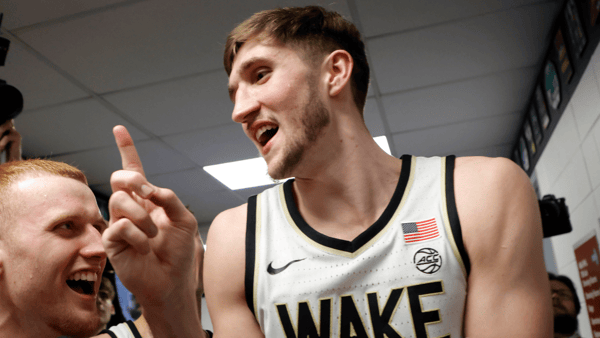
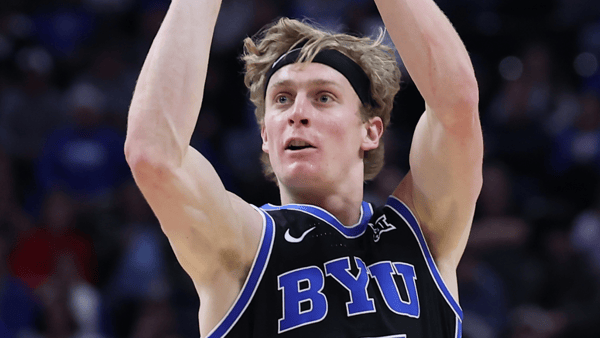
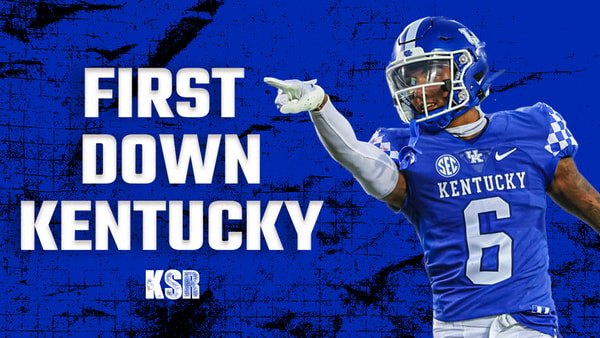
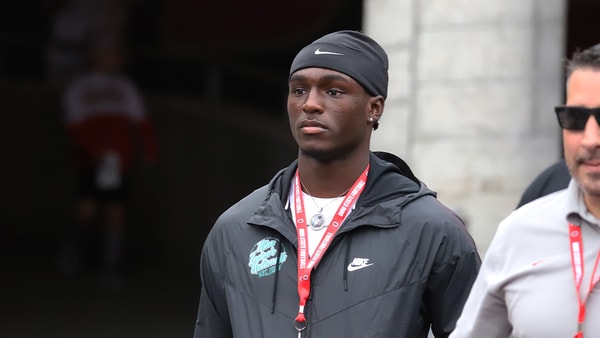
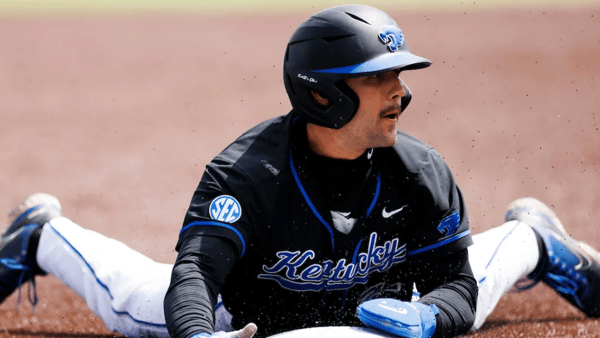
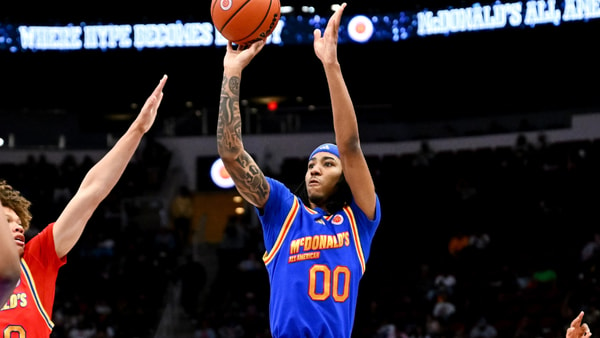
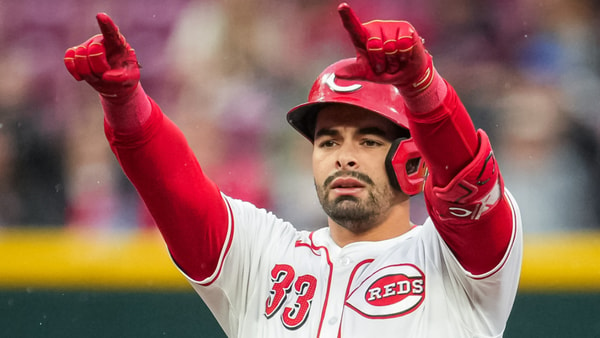
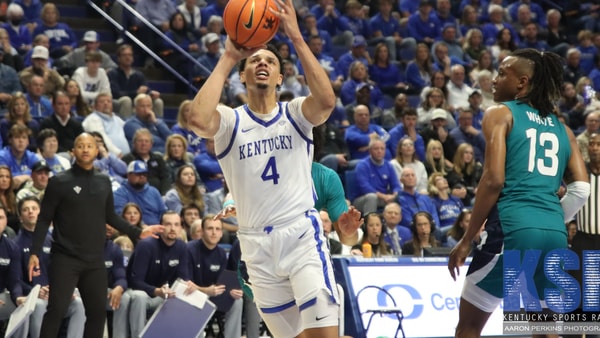
Discuss This Article
Comments have moved.
Join the conversation and talk about this article and all things Kentucky Sports in the new KSR Message Board.
KSBoard